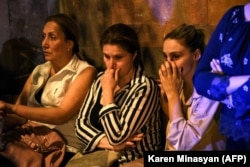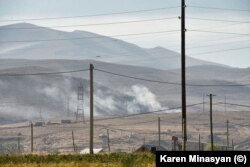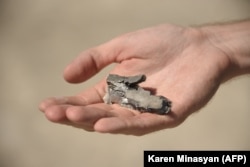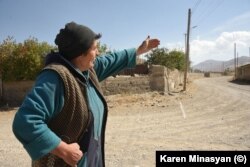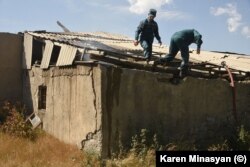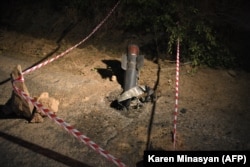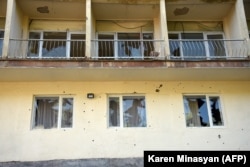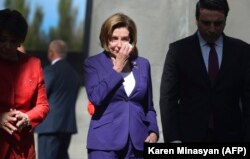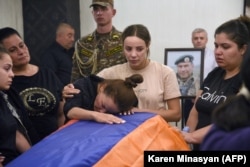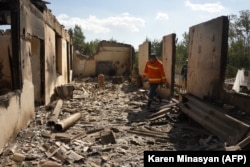Conflicting accounts from Baku and Yerevan of recent clashes on the border of Armenia and Azerbaijan were compounded by scanty visual reporting from the region.
Karen Minasyan is a veteran photographer with AFP and was one of the first journalists to arrive at the scene of some of the deadly violence. He described to RFE/RL what he saw from the Armenian side as he took the following photographs.
When Azerbaijan launched an attack against targets inside Armenia late on the evening of September 13, Minasyan was at his home in Yerevan. The following morning he travelled toward Sotk in eastern Armenia, near the restive border.
"Apparently, I was one of the first to take photos in the area," Minasyan said. "On the whole road from Martuni to Sotk, I could see smoke in the mountains from many rounds of shelling. The rumblings could be heard very clearly."
Armenia said military targets and civilian infrastructure were hit inside Sotk by Azerbaijan. Baku called the wide-ranging September 13 attacks a response to "provocations committed by Armenia on the Armenia-Azerbaijan border."
In Sotk, Minasyan spoke to an elderly couple who he says "described how it all began, how [Azerbaijani forces] started bombing their village at night and how they hid. They said that they were refugees from [ethnic violence against Armenians in Baku], and now there is nowhere left to run."
On September 15, Minasyan was granted access to the Armenian resort town of Jermuk, around 13 kilometers from the border with Azerbaijan. The town was hit with shelling and had been evacuated.
The road to Jermuk was "almost deserted," according to Minasyan. "There was a strange silence in the city at that moment as a cease-fire had already been agreed. Inside Jermuk the photographer was "struck by the emptiness -- there were no civilians, only the military were left."
"We were shown the impact of shelling. I filmed a sanatorium with broken windows, after a shell landed around 15 meters away, and I rented a guest house, which had taken a direct hit," Minasyan recalled.
Many of the photographs Minasyan made were limited by where he was allowed to point his camera. "Filming the military in a way that could reveal their positions was not permitted," the photojournalist told RFE/RL. "It's understandable for security reasons, but there weren't such strict rules for filming even during [the 2020 war with Azerbaijan over Nagorno-Karabakh]."
"Apparently it's a result of many people inadvertently putting military lives at risk by filming things [and] then putting the images online, thus giving away locations for future strikes," he said.
On September 18, Nancy Pelosi became the highest-ranking U.S. official to visit independent Armenia. During her stay the U.S. politician strongly condemned the recent "illegal and deadly attacks by Azerbaijan" on Armenia.
Minasyan photographed Pelosi, along with a throng of other journalists, on September 18. "Many Armenians think that it is not worth getting their hopes up, that this is beautiful diplomacy and that little will change in reality," he said of the visit. "But the fact is that now people have more hope of getting help from the West than from Russia."
Armenia is a member of the Collective Security Treaty Organization (CSTO), a Russian-led defense bloc. A formal call for military assistance from Yerevan has been met with a tepid response from the CSTO leadership as the Russian military remains bogged down in its invasion of Ukraine.
The recent fighting along the Armenian-Azerbaijani border has left more than 200 dead on both sides. Minasyan says many in Armenia predict that the hostilities are likely to continue. "Now people are looking for any help from outside, including in the form of weapons."





